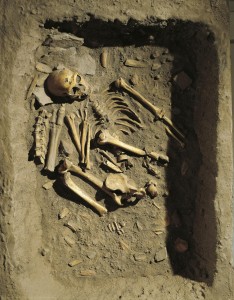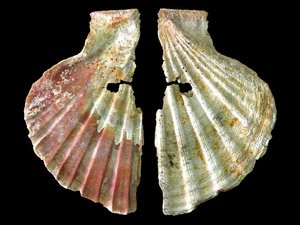To an archaeologist, human remains can be considered a treasure chest of information. Human remains do not just simply tell archaeologists about the death of the individual, they can also reveal much of the life story, such as age, sex, height, genetic ancestry, if they had any illness/disease, types of food they ate, past injuries and how they were treated, any deliberate body modifications, and so much more. An individual’s remains can explain a little bit about their life, but a burial ground(or lack thereof) can explain much about the surrounding culture of the people as a whole.
In 1908, two archaeologists, known as the Bouyssonie brothers, discovered a site in La Chapelle-aux-Saints, France and immediately hypothesized the possibility of these remains being intentionally buried; however, at that time, they did not have enough information, nor the appropriate technology to reach this conclusion.
After a 13 year reexamination of the site, archaeologists were able to conclude that there was at least partial modifications the area to create a grave. This conclusion forces a reevaluation of the idea of the neanderthal and its culture. The findings from the site showed that Neanderthals were not the ignorant, barbarian-like characters that modern humans perceive them to be. Archaeologists found that the Neanderthals were more similar to modern humans than they had previously thought. Neanderthals had actually decorated themselves with pigments and wore jewelry made from feathered and colored shells. They also cared for their sick and elderly. The skeleton discovered in the La Chapelle site showed that the deceased suffered from hip and back problems that would have made movement without assistance extremely difficult. These findings serve as evidence that the Neanderthals had developed complex thought and culture.
Death may be one of the most important topics in archaeology, as how the living treat the dead reveal a lot about the culture and thought process of the living.The findings of the La Chapelle site helped to clarify much about the culture of Neanderthals; however, this also raises many questions that will likely be left unanswered due to the lack of written records in Neanderthal history. Archaeologists are left to wonder if the burial was ceremonial or if it was simply for practical purposes. Also, there was also the possibility that the Neanderthals were not the first to bury the dead and that they simply adopted the practice from some other species. In the future, there may be more discoveries that can answer these lingering questions behind the Neanderthal burial ground; however, the discovery is still remarkable.
Further Reading
http://news.discovery.com/human/neanderthal-graveyard-found-131216.htm
http://articles.latimes.com/2013/dec/17/science/la-sci-sn-neanderthals-buried-dead-20131217
Sources
http://depthome.brooklyn.cuny.edu/anthro/jadar/pearson.pdf
http://news.nationalgeographic.com/news/2013/12/131216-la-chapelle-neanderthal-burials-graves/
http://www.npr.org/templates/story/story.php?storyId=122466430



Burial practices are embedded in culture reflecting the beliefs and values of a community. Studying funerary rituals from various societies can help archaeologists understand differing ideas about death and the existence of an afterlife. Examining human remains and burial grounds forces archaeologists not only to consider the environmental and economic effects of burial practices, but also the purpose, reasoning and value of particular customs. For example, in South Korea there has been a shift from traditional cremation to transforming human remains into beads. This new cultural practice emerged due to South Korea’s growing lack of space to bury their dead. Now, if future archaeologists find these beads, how would they interpret their meaning? Thus, context of an artifact is essential in archaeology when theorizing the cultural value and importance of an artifact, remains, or site.
For more information about South Korean death beads:
http://theweek.com/articles/478701/turning-dead-into-beads-south-koreas-odd-new-trend
Death beads… super interesting way of turning death into something else. But let’s take a minute to examine the Neanderthal burial image above. That individual is buried in a very odd position: the feet are planted just at the base of the pelvis. When there was still flesh, the knees would have pointed straight up but the soils past the feet suggest that it wasn’t because the hole was too small. Next to the head is a set of vertebrae and a foot from a large ungulate (hooved animal). Probably the same type that are painted in those caves. There is so much to learn here and we’re not even at the site or touching the bones.